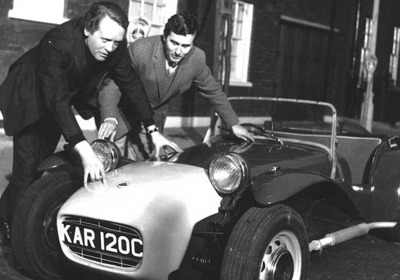Caterham creator Graham Nearn dies
Thu, 29 Oct 2009Britain has lost another of the champions of its specialist sports-car industry, Graham Nearn, who died on Oct. 24 at age 76.
Originally a Lotus dealer, Nearn built a highly successful sports-car business around the lightweight two-seat Lotus Seven, which he bought from Lotus founder Colin Chapman in 1973. Nearn devoted all of his energy over the following 32 years into nurturing and perfecting the simple two-seater into a giant-killing sports car called the Caterham 7. Its latest incarnation boasts a 263-hp engine, a 0-to-60-mph time of 3.1 seconds, and a near $70,000 price tag.
Nearn started out running one of Chapman's original Lotus Centers in 1959, in a humble location behind a gas station in the south London suburb of Caterham, from which Nearn took his car's name. Nearn showed a canny ability to see a business opening, and so it was when he persuaded Chapman to hand over rights to the Seven, the model that launched Lotus as a maker of road cars but didn't fit Chapman's ambitions in the mid-1970s.
The motoring world may have been on the verge of its first oil crisis, but Nearn knew that the Lotus Seven had a strong following and offered a unique driving experience with an unbeatable lightweight performance formula.
Over the years, the secret of Caterham's success has been to exploit that simple strategy by concentrating constant development on the basic spaceframe chassis and running gear, backed by clever marketing.
For example, Caterham developed its own de Dion rear axle and six-speed gearbox and delved into Ford, Vauxhall and Rover parts bins for engines to keep the model fresh and ahead of legislation.
Nearn also excelled at marketing the 7 and exploited motorsport not only as a window on the 7's capabilities, but also to generate a profitable parts business. The Caterham One-Make series now plays out at circuits across the globe every weekend in the race season.
Another highlight in the 1990s was Caterham's rivalry with TVR to build the best specialist British sports car. Sadly, Nearn's rival at TVR, Peter Wheeler, also passed away this year.
But success also brought problems, and imitators began to copy the 7, forcing Nearn to fight and win a bruising legal battle with British company Westfield. Less successfully, a plan to launch a fully enclosed body version, the Caterham 21, to compete with the Lotus Elise failed.
Undeterred, Nearn stuck to what he knew best, and sales tickled along at an average of about 300 a year, enough to add up to 9,300 cars built during the family's ownership. In the best years, annual production peaked at about 750 cars.
As Nearn approached retirement age, he handed over the reigns to his son Simon, who eventually sold the company to a group of investors.
A deal was completed in 2005, and the 7 continues to go from strength to strength, Caterham being one of a handful of overseas car companies represented at this year's Tokyo motor show.
By Julian Rendell



